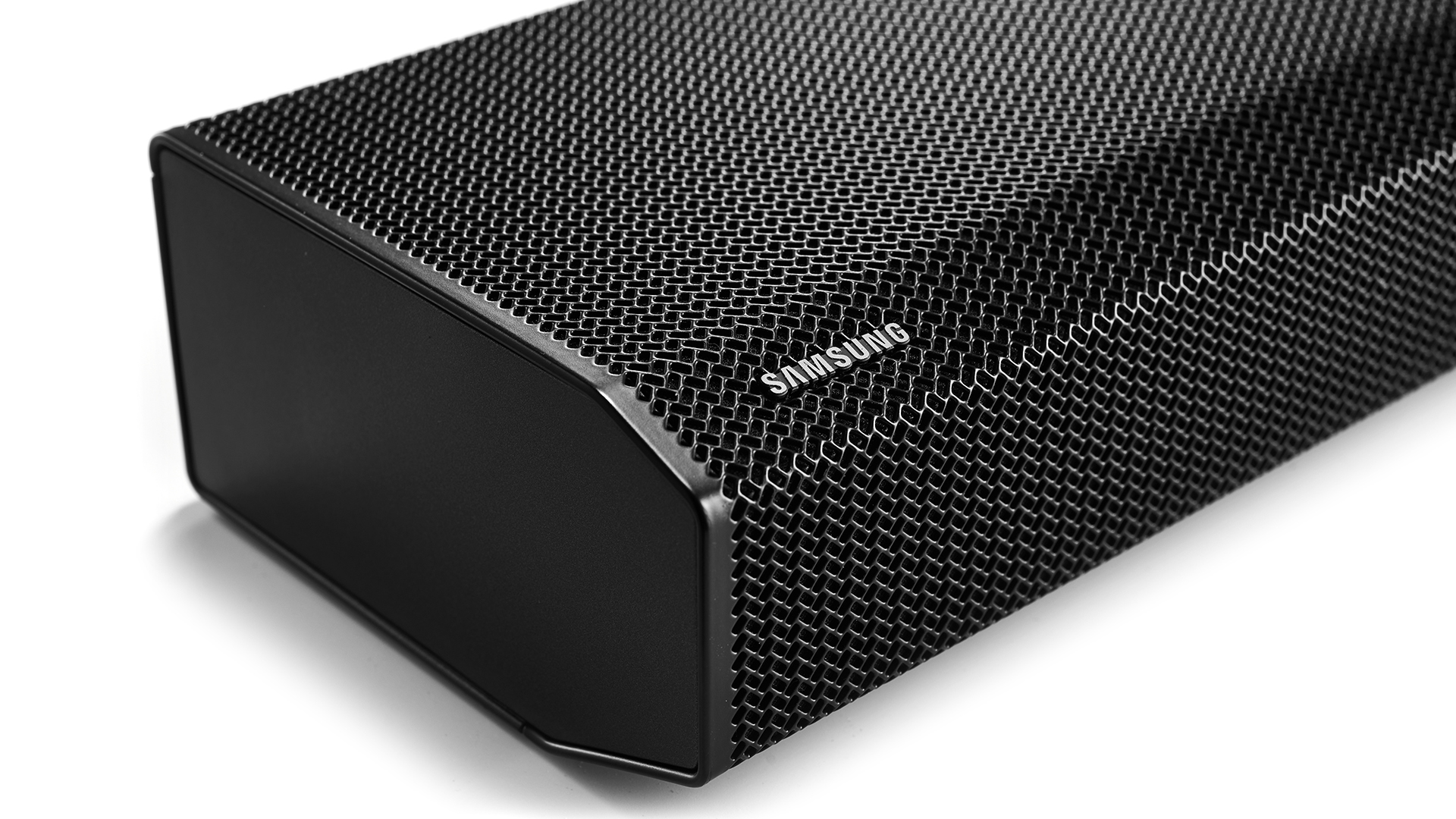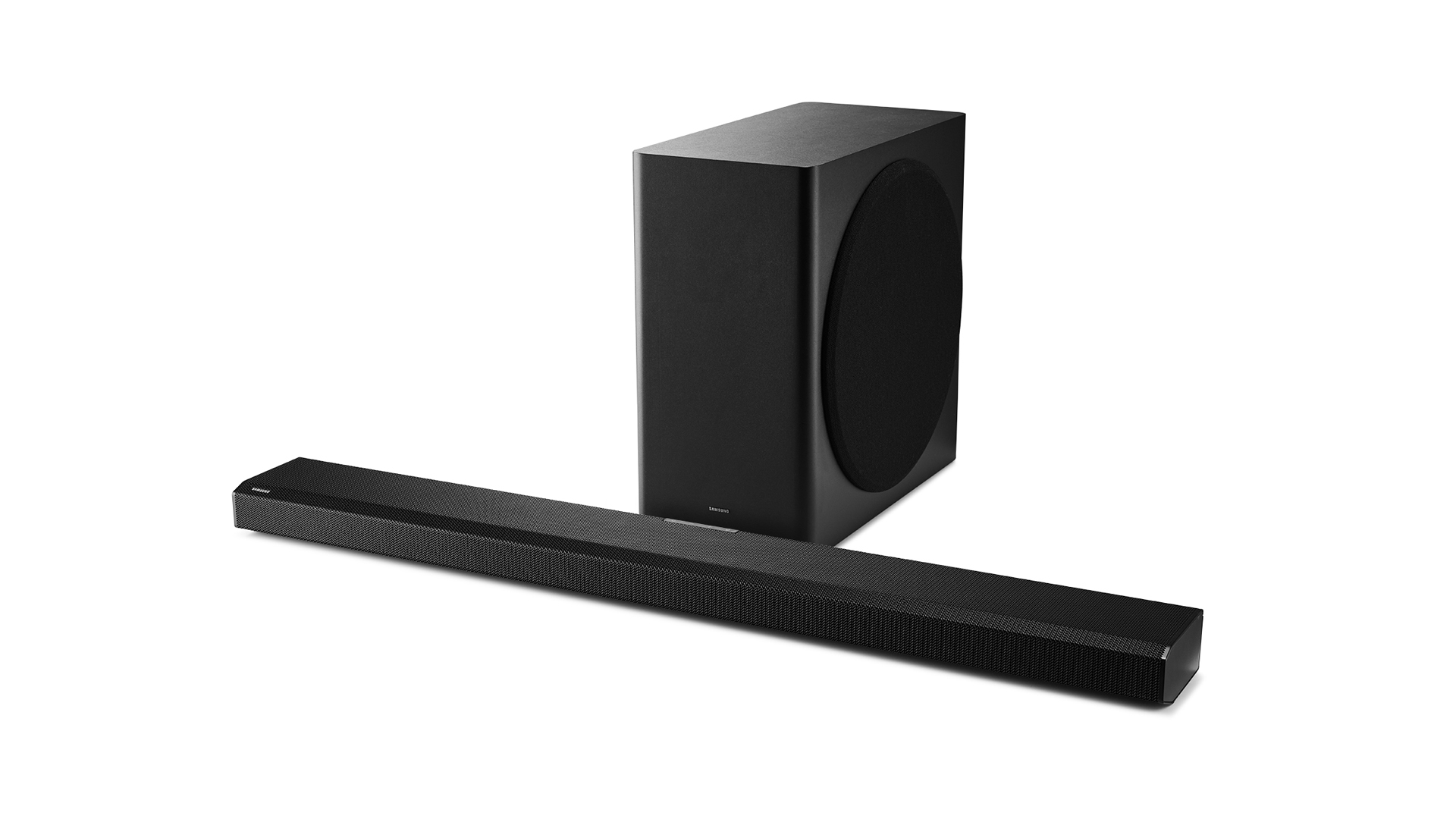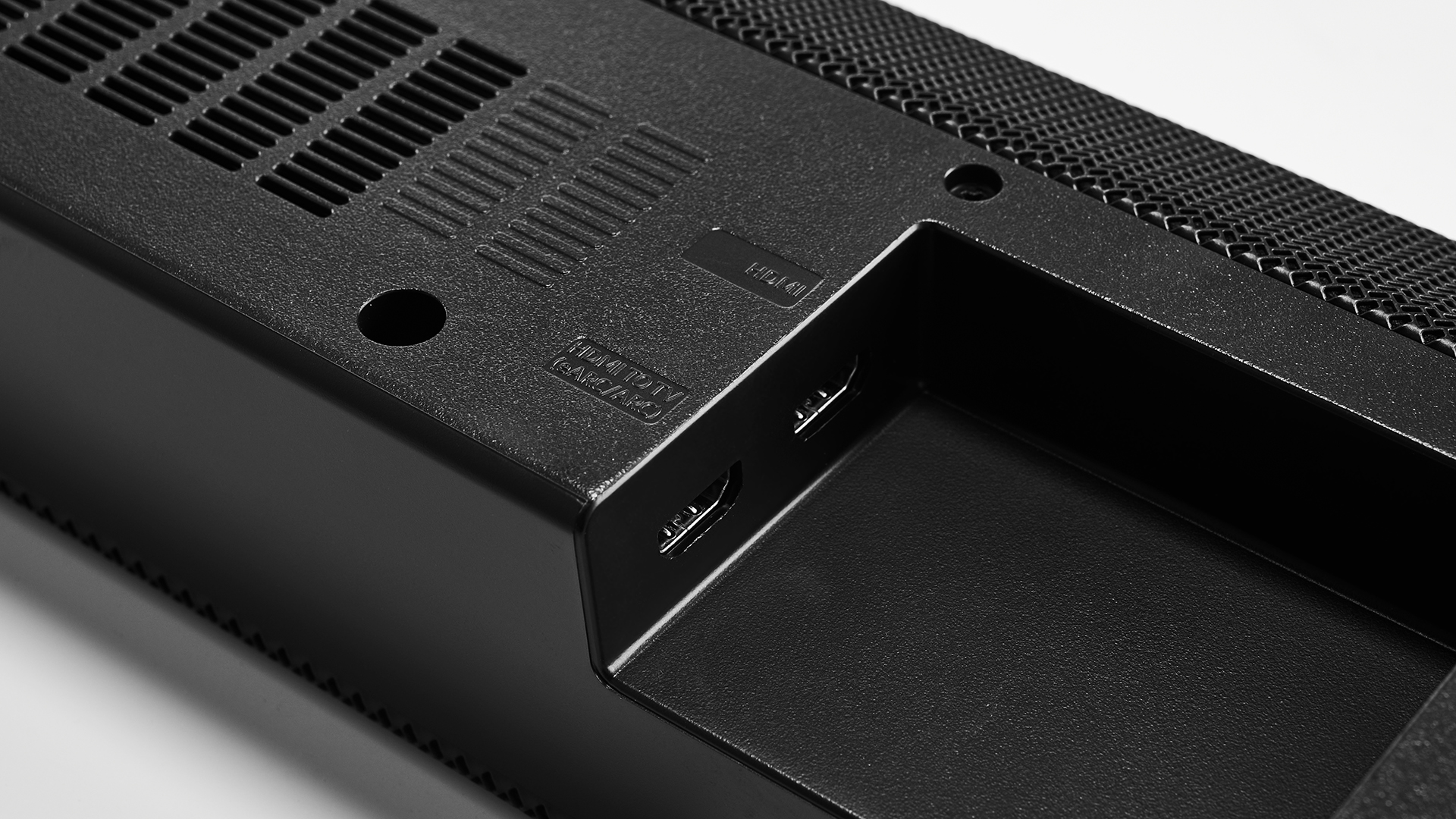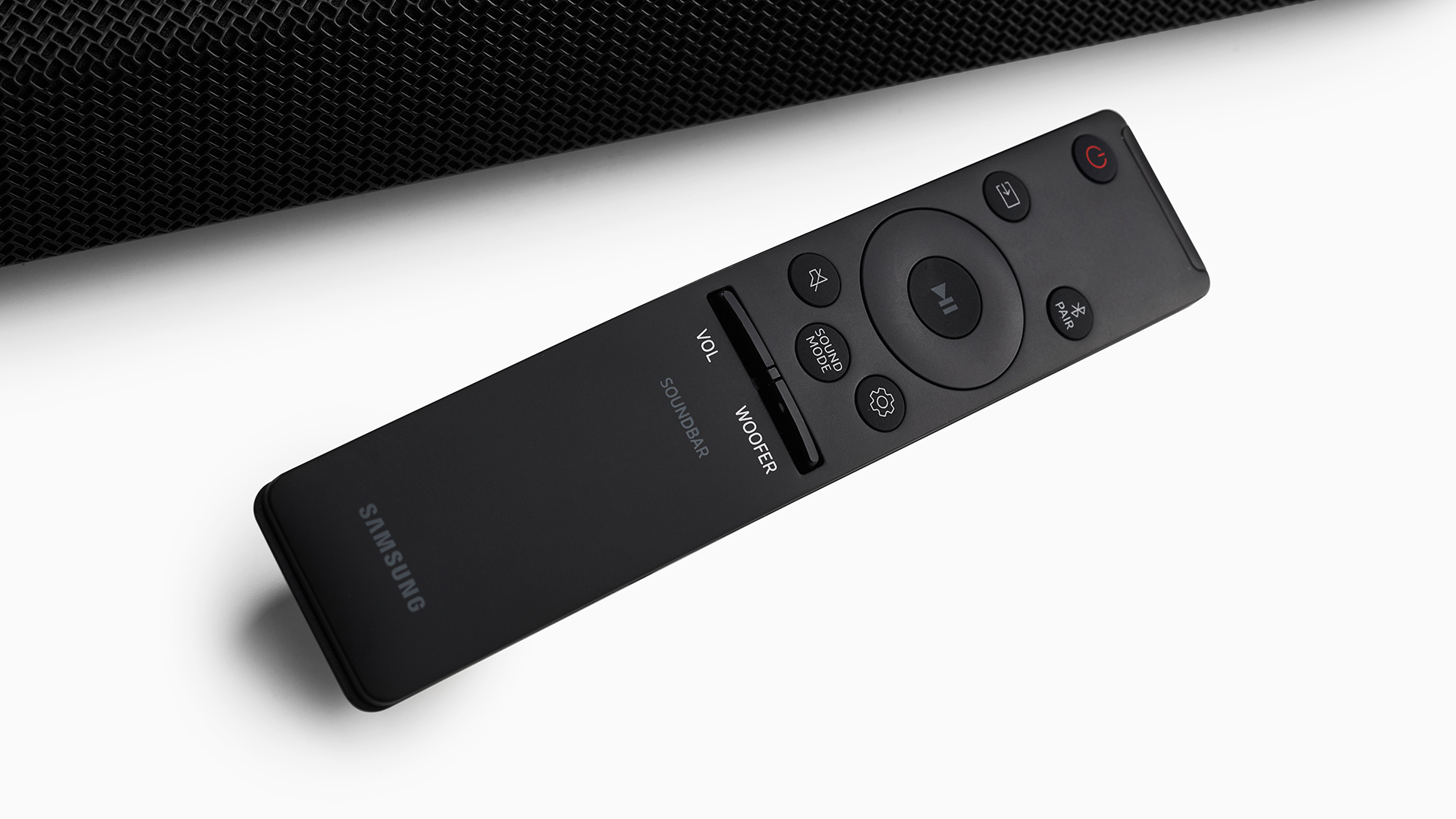What Hi-Fi? Verdict
The HW-Q800A is a powerful performer with a forthright delivery and room-filling dynamics, but it’s up against some tough competition
Pros
- +
Spacious presentation
- +
Weighty, articulate sub
- +
Good range of features
Cons
- -
Could be more insightful
- -
Height channel lacks precision
Why you can trust What Hi-Fi?
It’s no secret that we’re big fans of Samsung’s punchy and vivid QLED TVs, but so far we haven’t been quite so enamoured with the company’s range of soundbars. Its latest soundbar offering, the Samsung HW-Q800A, looks similar to previous models, but the company has made some improvements to performance as well as adding some new intelligent features.
Like previous generations of Q series soundbar, the HW-Q800A has a separate wireless subwoofer. That ability to deftly replicate the low frequencies that a single unit bar couldn’t reach is what distinguishes the HW-Q800A from its closest competition, most notably the Sonos Arc (£799, $799, AU$1399) which, like the Samsung, is Dolby Atmos-enabled.
The HW-Q800A delivers a muscular and articulate cinematic sound, and although it doesn’t hit the heights in terms of refinement or spatialisation, it is still an engaging listen.
Build

At only 57mm in height and measuring 116cm wide, the Q800A has been made to be heard, not seen. Its unassuming build is ideal for sitting in front of a range of TV sizes from 48-inch to 65-inch screens, or wall-mounted, with fixings included in the box.
The matt black wraparound metal grille is smart and discreet, as is the four-character LED display on the front face. Having a text display is more user friendly than decoding the series of flashing lights of other soundbars, though we find ourselves impatiently waiting for the words to scroll past, especially when trying to decipher if we’re in ‘Bluetooth pairing’ and ‘Bluetooth mode’.

Connections eARC, HDMI, optical
Sound formats Dolby Digital Plus, Dolby Atmos, DTS:X, LPCM 8Ch
Bluetooth version 4.2
AirPlay 2 Yes
Voice control Amazon Alexa
Dimensions (hwd) 6 x 98 x 11.5cm (bar); 40 x 21 x 40cm (sub)
Weight 3.6kg (bar); 9.8kg (sub)
The rear-ported active sub is also modestly sized and finished in matt black with a side-firing 20cm driver. Ideally, it should sit as close to the main soundbar as possible to ensure good integration. Though, as with all subwoofers, it’s worth playing around with placement to get the best balance of sound.
Across the front edge of the main soundbar are the three forward-facing channels: the left and right both consist of a tweeter and a mid-range/bass race-track driver, while the centre is a single wide-range tweeter.
Two upward-facing tweeters provide height channels for Dolby Atmos and DTS:X formats, which are auto-detected by the bar and indicated on the display. The sound from these drivers is enhanced by Samsung’s ‘Acoustic Beam 2.0’ technology – two rows of 23 holes that direct the wavefront upwards and outwards at an angle of 18 degrees to bounce off your ceiling and walls.
While Samsung has been using hole arrays this way for a while, the acoustic beam in the Q800A has been shifted further forward to help avoid interference from the TV.
Input connections for HDMI and power are recessed at the rear, and four touch-sensitive buttons for volume, microphone mute and power/source sit on top. The microphone allows for commands to the built-in Amazon Alexa voice assistant and can also be used to monitor background levels, as the Q800A has a feature that boosts the centre channel for clearer dialogue if ambient noise increases. On the underside of the soundbar, there are two fiddly buttons for connecting to wi-fi and linking the main unit to its sub, though our review sample paired automatically.
A simple, nicely laid out remote control is included, giving quick access to most of the system’s settings and a handy separate volume button for the sub. If you are connected to a wi-fi network, you can also control the bar using the SmartThings app.
Features

When watching content with a standard audio format, you can choose between three different sound profiles via the ‘sound mode’ button on the remote. There’s a ‘standard’ setting; ‘game mode pro’, which claims to offer a more immersive playing experience, and ‘surround mode’ that up-mixes basic audio to use the height channels and adds more weight to the extremities of the soundfield. There’s also an ‘adaptive’ option that auto-detects what you’re watching and changes the mode to suit.
Within the settings menu, there is another upmixing mode called ‘virtual’, which is similar to ‘surround’ but uses Dolby/DTS:X algorithms instead of Samsung’s own.
On the SmartThings app, there are three further sound options: a treble-boosting voice enhancement, a bass boost and a night mode that compresses the dynamics and sub frequencies. The range of options makes tweaking to suit your taste a bit convoluted, and that’s before you’ve even looked at the 7-band EQ or levels for each channel.
To connect to your TV, the Q800A has two HDMI ports, one equipped with eARC, and an optical input. For playing music from a portable device, there’s Bluetooth and, once connected to wi-fi, you can stream via Spotify Connect and AirPlay 2.
This year, all of Samsung’s Q soundbars offer enhanced features if used with newer TVs from within the brand’s ecosystem. The Q800A can combine with a Samsung TV’s internal speakers to add height and space to the soundfield in a feature called ‘Q-Symphony’ everywhere except on the actual settings menu, where you’ll find it labelled as ‘TV+AV soundbar’.
Another symbiotic feature is ‘SpaceFit’, which uses the TV’s inbuilt mic to analyse the level and direction of reflected sound waves, adjusting the audio accordingly. It’s an understated enhancement, rather than a full room calibration, but one that’s worth trying if your TV has the capability. For ‘SpaceFit’, you’ll need a 2021 Q70A or higher, while ‘Q-symphony’ is compatible with most 2021 models and 2020 TVs from the Q80T and above.
Sound

A lot of work has gone into developing the forthright delivery of the Q800A. Watching the Le Mans race in Ford v Ferrari, the soundbar delivers a soundstage way beyond its size. In amongst the rain, cars, and crashes, small touches, such as the seat noise or fingers tapping on the steering wheel, are well projected while dialogue is clear and direct.
The effect of the height channels is moderate and at times feels front-heavy rather than airy. We try Q-symphony and get a more noticeable dispersion of the field that gives some welcome space to the forward-facing channels.
We play the opening to Blade Runner 2049 and the sub gets a chance to shine with the bassy Dolby Atmos soundtrack. It handles the pulsing score with an epic sense of scale that a solo soundbar couldn’t hope to match. However, while we aren’t straining to hear the different elements of the orchestration, there’s a slight lack of definition. In the following quieter scenes, higher frequency sounds have an unwanted hard, sharp edge to them.
Shifting gears completely, we play the archaeology drama The Dig and the scene with Ralph Fiennes and Carey Mulligan in the caravan. As heavy rain beats on the corrugated roof, there’s a real sense of the reverberant space that the characters are in versus the weather outside.
We try SpaceFit and, while it’s only a subtle tweak, there’s a tightening of the dynamics and spot sound effects sit more cohesively within the soundscape. As soon as we watch the same film with the class-leading Sonos Arc, we miss the loss of low end in the underscore and distant thunder, though its handling of the atmospheric effects and dialogue is notably crisper and more precise.
To test the Q800A's musical chops, we stream The Duke Spirit’s The Step And Walk and we’re back in the soundbar’s comfort zone. The guitars have a harmonious bite, and as the vocal flits between crooning and snarling, it feels present without becoming harsh, even when the level is pushed.
Swap to the more sparse The Cool, Cool River by Paul Simon and, like most soundbars, the Q800A struggles in terms of rhythmic cohesion, although it holds together and in the final section as the brass kicks in, the dynamic shift is strident and incisive.
Verdict
The Q800A offers powerful overall performance and a comprehensive set of features, especially if you’re planning on purchasing a 2021 Samsung TV.
It makes a decent attempt at Dolby Atmos, but if your primary concern is accomplished handling of height channels, we’d suggest considering the Sony HT-ST5000 and Sonos Arc or even adding the compatible upward-firing surrounds (SWA-9500S) to boost the Q800A to a 5.1.4 system.
But when it comes to room-filling sound and a gut-busting bass, this is already a more than capable soundbar. It marks a clear step forward for Samsung by offering all-round performance and an enjoyable, present and compelling listening experience, especially if you value the low end of the sonic spectrum.
SCORES
- Sound 4
- Features 5
- Build 4
MORE:
Read our guide to the best soundbars
Read our Sonos Arc review
Read our Sony HT-ST5000 review
Read our Dali Katch One review
What Hi-Fi?, founded in 1976, is the world's leading independent guide to buying and owning hi-fi and home entertainment products. Our comprehensive tests help you buy the very best for your money, with our advice sections giving you step-by-step information on how to get even more from your music and movies. Everything is tested by our dedicated team of in-house reviewers in our custom-built test rooms in London, Reading and Bath. Our coveted five-star rating and Awards are recognised all over the world as the ultimate seal of approval, so you can buy with absolute confidence.

